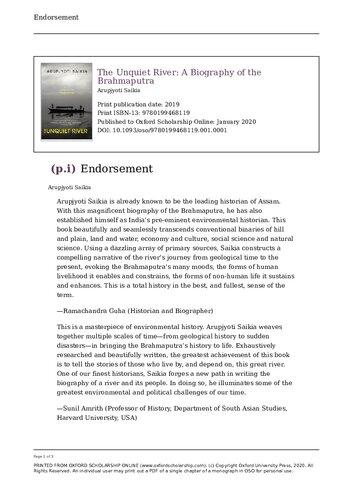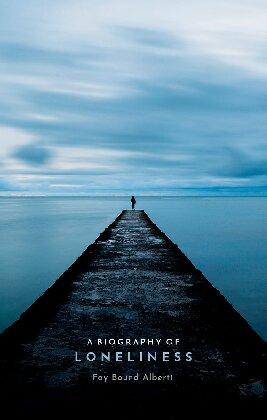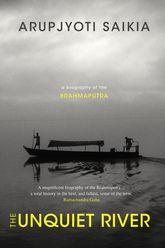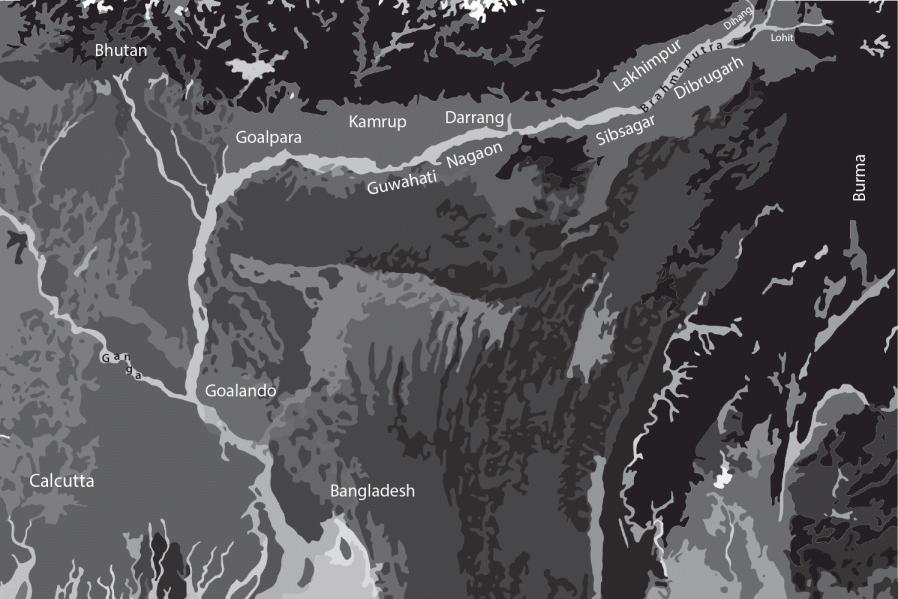Brahmaputra 1st Edition Arupjyoti Saikia
Visit to download the full and correct content document: https://ebookmass.com/product/the-unquiet-river-a-biography-of-the-brahmaputra-1stedition-arupjyoti-saikia/

More products digital (pdf, epub, mobi) instant download maybe you interests ...

Governance of a Transboundary River: The Rhône 1st ed. Edition Christian Bréthaut
https://ebookmass.com/product/governance-of-a-transboundaryriver-the-rhone-1st-ed-edition-christian-brethaut/

Hitler: A Biography
1st
Edition Peter Longerich
https://ebookmass.com/product/hitler-a-biography-1st-editionpeter-longerich/

The Other Side of the River Alda P. Dobbs
https://ebookmass.com/product/the-other-side-of-the-river-alda-pdobbs-2/

The Life of Henry James: A Critical Biography Peter Collister
https://ebookmass.com/product/the-life-of-henry-james-a-criticalbiography-peter-collister/

A Biography of Loneliness: The History of an Emotion Fay Bound Alberti
https://ebookmass.com/product/a-biography-of-loneliness-thehistory-of-an-emotion-fay-bound-alberti/

Flight of the Hawk The River Gear
https://ebookmass.com/product/flight-of-the-hawk-the-river-gear/

In the Heart of Autumn: A River Haven Novel (River Haven Romance Book 2) Noelle Bensen
https://ebookmass.com/product/in-the-heart-of-autumn-a-riverhaven-novel-river-haven-romance-book-2-noelle-bensen/

Biography of X: A Novel Catherine Lacey
https://ebookmass.com/product/biography-of-x-a-novel-catherinelacey/

The Other Side of the River Alda P. Dobbs
https://ebookmass.com/product/the-other-side-of-the-river-alda-pdobbs/

The Unquiet River: A Biography of the Brahmaputra
Arupjyoti Saikia
Print publication date: 2019
Print ISBN-13: 9780199468119
Published to Oxford Scholarship Online: January 2020 DOI: 10.1093/oso/9780199468119.001.0001
(p.i) Endorsement
Arupjyoti Saikia
Arupjyoti Saikia is already known to be the leading historian of Assam. With this magnificent biography of the Brahmaputra, he has also established himself as India’s pre-eminent environmental historian. This book beautifully and seamlessly transcends conventional binaries of hill and plain, land and water, economy and culture, social science and natural science. Using a dazzling array of primary sources, Saikia constructs a compelling narrative of the river’s journey from geological time to the present, evoking the Brahmaputra’s many moods, the forms of human livelihood it enables and constrains, the forms of non-human life it sustains and enhances. This is a total history in the best, and fullest, sense of the term.
—Ramachandra Guha (Historian and Biographer)
This is a masterpiece of environmental history. Arupjyoti Saikia weaves together multiple scales of time—from geological history to sudden disasters—in bringing the Brahmaputra’s history to life. Exhaustively researched and beautifully written, the greatest achievement of this book is to tell the stories of those who live by, and depend on, this great river. One of our finest historians, Saikia forges a new path in writing the biography of a river and its people. In doing so, he illuminates some of the greatest environmental and political challenges of our time.
—Sunil Amrith (Professor of History, Department of South Asian Studies, Harvard University, USA)
Arupjyoti Saikia’s history of the Brahmaputra springs from two big ideas. The first requires treating natural and human history of the river in a coeval fashion. The second insists on a visualization of riverine environmental history as inseparable from the environmental histories of mountains and plains that are the source regions and companion terrain of the river. Saikia discovers the many registers, including literature and poetry, hydrology and agrarian history, in which life in and around the Brahmaputra is imagined, experienced, transformed, and ultimately narrated. A peerless contribution to scholarship, this book will inform and enthral all readers.
—K. Sivaramakrishnan (Dinakar Singh Professor of Anthropology and Professor of Forestry and Environmental Studies, Yale University, USA)
With rich stories and gripping narratives, the author invites you to ‘take a boat to the middle of the river’, ‘swim across certain depths’, and ‘get [y]our feet wet in the shallows’. What a remarkable journey across space and time, allowing you to witness the intimate relationships and coevolution among the river, (p.ii) the floodplains, the highlands, and many lives struggling and thriving with them! Read the book; take the journey.
—Ling Zhang (Associate Professor of History, Boston College, USA)
Lucky Brahmaputra, lucky Assam! If a river could get to choose for its biographer the most learned, comprehensive, scrupulous, and yet sensitive scholar available, the Brahmaputra could not possibly have done better. Saikia’s superb study is a model of interdisciplinary learning, hydrological knowledge, and historical depth. The Yangzi and Indus must be green with envy.
—James C. Scott (Sterling Professor of Political Science and Anthropology, Yale University, USA)
What kind of history can be told of a region by a river which is its lifeblood and lifeline? Crashing down from the Himalayas, moody and impervious to human efforts to engineer and tame it, the Brahmaputra has sustained the ecology of life and society of Assam, on its terms so far. Saikia’s opus is magisterial, but not without passion, as he describes the human–river interactions from its geological bases to contemporary hydrological conceits.
—Prasenjit Duara (Oscar Tang Professor, Duke University, USA)
No longer is The Unquiet River a mere abstract flowing on the margins of time. Using a historian’s craft, Saikia reveals the Brahmaputra as a vibrant
force of mud, silt, and fury that has played a part in the making of social worlds and the shaping of political possibilities.
—Rohan D’ Souza (Associate Professor, Graduate School of Asian and African Area Studies, Kyoto University, Japan)
An environmental history of the Brahmaputra has long been overdue. Much like the Indus, Mekong, Yangtze, Kaveri, and Ganga, this is a river whose story is laden with not one but many keenly contested meanings, nowhere more so than in Assam. The state’s foremost environmental historian traces the story of more than just the river. This book contains a forest of narratives of change through time; floods and jute fields, tea gardens and dykes, grasslands and flood plains all come alive with a cast of human characters whose dreams and nightmares, hopes and fears do so much to shape the great river. Saikia also warns of the limits to human engineering of a great river with a majesty that still stirs poets, writers, and lay persons alive.
—Mahesh Rangarajan (Professor of History and Environmental Studies, Ashoka University, India)
Access brought to you by:

The Unquiet River: A Biography of the Brahmaputra
Arupjyoti Saikia
Print publication date: 2019
Print ISBN-13: 9780199468119
Published to Oxford Scholarship Online: January 2020 DOI: 10.1093/oso/9780199468119.001.0001
Title Pages
Arupjyoti Saikia
(p.iii) The Unquiet River (p.iv) (p.v) The Unquiet River (p.vi) Copyright Page


Oxford University Press is a department of the University of Oxford. It furthers the University’s objective of excellence in research, scholarship, and education by publishing worldwide. Oxford is a registered trademark of Oxford University Press in the UK and in certain other countries.
Published in India by Oxford University Press
1 of
22 Workspace, 2nd Floor, 1/22 Asaf Ali Road, New Delhi 110 002, India
© Oxford University Press 2019
The moral rights of the author have been asserted.
First Edition published in 2019
All rights reserved. No part of this publication may be reproduced, stored in a retrieval system, or transmitted, in any form or by any means, without the prior permission in writing of Oxford University Press, or as expressly permitted by law, by licence, or under terms agreed with the appropriate reprographics rights organization. Enquiries concerning reproduction outside the scope of the above should be sent to the Rights Department, Oxford University Press, at the address above.
You must not circulate this work in any other form and you must impose this same condition on any acquirer.
ISBN-13 (print edition): 978-0-19-946811-9
ISBN-10 (print edition): 0-19-946811-7
ISBN-13 (eBook): 978-0-19-099040-4
ISBN-10 (eBook): 0-19-099040-6
Typeset in Minion Pro 10.5/13 by Tranistics Data Technologies, Kolkata 700 091 Printed in India by Replika Press Pvt. Ltd
Access brought to you by:
of

The Unquiet River: A Biography of the Brahmaputra
Arupjyoti Saikia
Print publication date: 2019
Print ISBN-13: 9780199468119
Published to Oxford Scholarship Online: January 2020 DOI: 10.1093/oso/9780199468119.001.0001
(p.ix) Acknowledgements
Arupjyoti Saikia
LIKE MARK TWAIN’S MISSISSIPPI, THE Brahmaputra seems to be an open book, always ready to tell its own story. But it runs deep and wide and encompasses many complexities. Writing a book about such a multifaceted river would not have been possible without the help of many friends. I have relied on the research of numerous scholars and scientists who have spent their lifetimes studying the river and the life around it. I have learned from their conversations, and have liberally used their ideas and findings. At different times and places, I have received generous advice from Katherine Morrison, Kuntala Lahiri Dutta, Mahesh Rangarajan, James C. Scott, Rohan D’Souza, Ramachandra Guha, Gunnel Cederlöf, Nayanjot Lahiri, Upinder Singh, Robert James Wasson, Tanika Sarkar, Neeladri Bhattacharya, Sugata Bose, K. Sivaramakrishnan, Dipesh Chakravarty, Iftekhar Iqbal, Indrani Chatterji, David Gilmartin, Sumit Guha, Sunil Amrith, Pradip Krishen, Mukul Sharma, Shekhar Pathak, Annu Jalais, Amita Baviskar, Nandini Sundar, Maan Barua, Himanshu Thakkar, Ghazala Shahabuddin, Raman Sukumar, Prasenjit Duara, William Van Schendel, Mandy Sadan, Dan Smyer Yu, Malini Sur, Raziuddin Aquil, Berenice Guyot-Rechard, Shruti Kapila, Sanal Mohan, Bhaskar Vira, Chris Courtney, Anindya Sinha, Debjani Bhattacharyya, Rana Pratap Behl, Gautam Bhadra, Daniel Bander, and Jayeeta Sharma. All have (p.x) contributed to the making of this book in some way or the other. Kaushik Dasgupta volunteered to read some of the early drafts. I am especially thankful to Mahesh Rangarajan, Robert James Wasson, Gunnel Cederlöf, Rohan D’Souza, and the late Basudev Chatterji for reading parts of this book. Despite their busy schedules, they generously and carefully commented on sections of the manuscripts. Mahesh Rangarajan read an early draft of the complete manuscript and provided thoughtful insights and comments.
Page 1 of 4
The book would not have been possible without a generous postdoctoral fellowship at the Program in Agrarian Studies at Yale University, USA. There I attended seminar courses taught by James C. Scott and K. Sivaramakrishnan. Both Jim and Sivi have been instrumental in shaping this book. The seminars convinced me that behind the aesthetics of the Brahmaputra that charm us, there lies a complex story of humans and nature that requires serious attention. The fellowship essentially compelled me to rethink this book. Peter Perdue at Yale, vastly knowledgeable about the Chinese rivers, was kind enough to listen to my accounts of the Brahmaputra. Wonderful colleagues provided muchneeded intellectual companionship: Ling Zhang, Dario Gaggio, Roseann Cohen, Brooke Crockett, Kasturi Gupta, Sahana Ghosh, Aniket Aga, Chitrangada Choudhury, Juned Sheikh, Madhabi Murthy, Lousia Cortesi, Sara Shneiderman, Rochisha Narayan, and Aniket Dey at Yale; Arnab Dey at Chicago; Aniket Dey at Harvard; Aparna Sarma and Monica Smith at University of California Los Angeles (UCLA).
A book of this nature would have been stillborn without access to the marvellous collections at the British Library; the School of Oriental and African Studies (London); The London Metropolitan Archives and the Bodleian Library, Oxford University; Cambridge University Library; the Lakshminath Bezbaruah Library, Indian Institute of Technology Guwahati (IIT-G); Jawaharlal Nehru University, libraries of the Yale and Chicago Universities; the UCLA Library; National Archives of India (New Delhi); Assam State Archives (Dispur); S.K. Bhuyan Library, Cotton University (Guwahati); the K.K. Handique Library, Gauhati University; and documents available at digital sites of many libraries including National Digital Library of India and National Archives of India. Staff at the Assam State Archives were extremely supportive. Jishnu Barua and his brilliant team of archivists (p.xi) have transformed the Assam State Archives in the last few years. Research in the Assam State Archives is a pleasure now and I am sure that more scholars will come to work in these archives. Prabir Mukhopadhyay of the library of the University of Calcutta was always generous with his time in locating archival sources.
Doubts about the Brahmaputra and ecological niceties of Assam were often sorted out with generous advice from Abani Bhagawati, Arup Kumar Dutta, Dulal C. Goswami, Chandan Mahanta, Chandan Sarma, Arup Kumar Sarma, Neeraj Vagholikar, Jahnabi Gogoi Nath, Akhil Gogoi, Prasun Barman, Jiban Narah, Kalyan Das, Navarun Varma, Gitashree Tamuli, Narayan Sarma, Apurba Kumar Das, Manjil Hazarika, Sarat Phukan, Lakhi Prasad Hazarika, Sidhartha Lahiri, Subasisha Dutta, and Chandan Kumar Sarma. I am grateful to all of them. Anupam Barua helped me in rectifying several factual inaccuracies. I owe special thanks to Ranjit Kumar Dev Goswami and Pradip Khatoniar for spending with me endless hours in conversation and answering my queries on the complexities of Assam and her history with patience, humour, and eloquence. I had the wonderful opportunity to work with my graduate students at IIT-G:
Page 2 of 4 PRINTED FROM OXFORD SCHOLARSHIP ONLINE (www.oxfordscholarship.com). (c) Copyright Oxford University Press, 2020. All Rights Reserved. An individual user may print out a PDF of a single chapter of a monograph in OSO for personal use.
Prarthana Saikia, Namrata Borkataky, Rakesh Soud, Biswajit Sarma, Himalaya Bora, Swagata Mukhopadhaya, and Kawaldeep Kour. Special mention must be made of graduate students at Jawaharlal Nehru University: Bedabrata Gogoi and Bikram Bora; they deserve special thanks for their great help. Upasana Devi and Paloma Bhattacharjee brilliantly surfed through many archival and other textual materials for me. Several research interns, who meticulously went through my archival notes, made writing for this work easier.
My workplace, the Department of Humanities and Social Sciences in IIT-G, is surrounded by the sounds of the Brahmaputra. There could be no better place than this institution to think about and be inspired to write about the Brahmaputra. Colleagues have been supportive intellectually as well as otherwise. For their warmth and friendship, I would like to thank colleagues at IIT-G: John Thomas, Vipul Dutta, Debarshi Das, Priyankoo Sarmah, Sukanya Sarma, Mrinal Kanti Dutta, Saundarjya Borbora, Rohini Mokashi-Punker, Ritwik Ranjan, and Ranu Roychodhuri deserve special mention. Banti Bhuyan and Pradip K. Bhuyan of S.K. Bhuyan Endowment Trust have generously donated an endowment chair at IIT-G. The major research for this (p.xii) work was made possible with the help of this grant. A grant from the Action Aid Association has helped to procure maps and other works for this book.
Abhishek Srivastava and Bishnu Tamuli from the Design Department at IIT-G helped prepare and redraw maps and images of the modern Brahmaputra and the surrounding floodplain landscape. I thank Arati Kumar-Rao and Rituraj Konwar for the photographs used in the book.
Two anonymous reviewers of the Oxford University Press (OUP) offered careful insights into the manuscript. I owe a large debt to Rimli Borooah, a marvellous editor, who generously brought her editorial eye to give a new lease of life to my fuzzy ideas. Reading with great care and intelligence, some parts more than twice, she made better every page she handled. Editors at OUP have been extremely supportive and encouraging throughout the process. The editorial team at OUP paid meticulous attention to ensure that the manuscript makes a safe landing. I am deeply grateful to them for their sustained interest in this work.
Ideas which are part of this book were presented in various conferences, talks, and television programmes, including Yale Agrarian Studies Colloquium; Yale South Asia Colloquium; American Environmental History Conference; Duke River History Conference; Association of Asian Studies Conference at Kyoto; Disaster History Conference at National University of Singapore; Nehru Memorial Museum and Library, New Delhi; Dibrugarh University; Cotton University; and National Centre for Biological Sciences, Bengaluru. I am indeed fortunate to have received insightful comments from those who listened to me— insights which have eventually become part of the book. Thoroughly revised
Page 3 of 4
portions from A. Saikia, 2015, ‘Jute in the Brahmaputra Valley: The Making of Flood Control in Twentieth-century Assam’, Modern Asian Studies 49 (5): 1405–41 have been used in chapters1,9, and11, and from A. Saikia, 2013, ‘Ecology, Floods and the Political Economy of Hydropower: The River Brahmaputra in the 20th Century’, paper published by Nehru Memorial Museum and Library, in chapters1and12of this book.
I have chosen to write about the river’s journey through Assam. I am fortunate to have been born and brought up not far from the river and its floodplains. This is where I live and it is the history and culture (p.xiii) I am most familiar with. It is a region where the river is seen as central to culture, identity, and politics. This book contains many of the ideas I have gained by virtue of being born and presently living on the river’s bank.
I also owe a substantial debt of gratitude to the people, including my childhood friends, who live in and around the Brahmaputra—my efforts at putting this book together pales in comparison to their daily experiences with the river. My ideas of floods and agriculture come from their and my own experiences of learning to live with those volatile landscapes.
My family has been extremely supportive. I have missed many an event when I should have been with them, so much so that my presence is hardly required for family occasions any more. Banani, despite her own demanding teaching responsibilities, has shouldered most of the responsibilities that I escaped from. She has helped me to become familiar with many facets of the Assamese literary world. Nizan is now my honorary editorial adviser who equally enjoys reading about the Brahmaputra. They shared every moment that has emerged during the writing of this book. Without their love and support, this book would have been impossible.
Gautam Bhadra, an inspiring teacher, an outstanding historian, and a fine human being, insisted that I write this book. This book is dedicated to Gautamda. Finally, I owe a lot to Mewnu for claiming my reading desk as his dais and my keyboard as his ramp. (p.xiv)
Access brought to you by:
Note on Geography, Spelling, Illustrations, and Referencing Style

The Unquiet River: A Biography of the Brahmaputra
Arupjyoti Saikia
Print publication date: 2019
Print ISBN-13: 9780199468119
Published to Oxford Scholarship Online: January 2020
DOI: 10.1093/oso/9780199468119.001.0001
(p.xv) Note on Geography, Spelling, Illustrations, and Referencing Style
Arupjyoti Saikia
THOUGH THE BRAHMAPUTRA MAKES A wonderful journey across nations (China, India, and Bangladesh), in this book the river is discussed essentially in reference to its life and times in the Indian state of Assam only. Place names, such as Gauhati, Durrung, and Nowgong, which were transliterated differently earlier have been used in their current forms. Similar rules apply to surnames such as Phookun and so on. Exceptions are made for historically well-known spellings for places and names of tribes, including institutions such as Gauhati University. The river’s name was also spelled variously until the mid-nineteenth century. If not part of a quote, the book has used the standard spelling ‘Brahmaputra’.
The book follows two different sets of referencing. For the standard printed books, one can refer to the bibliography for full references. The archival materials are cited in complete detail in the notes itself, along with the newspaper and journal references.
Maps produced here are for illustration and not to scale. They are redesigned based on original sources, which are mentioned individually as well. Figures, unless specifically mentioned otherwise, also follow similar rules. (p.xvi)
Access brought to you by:

The Unquiet River: A Biography of the Brahmaputra
Arupjyoti Saikia
Print publication date: 2019
Print ISBN-13: 9780199468119
Published to Oxford Scholarship Online: January 2020 DOI: 10.1093/oso/9780199468119.001.0001
(p.xvii) Figures and Tables
Arupjyoti Saikia
Figures
I.1An artist’s impression of the Brahmaputra through the floodplains of India and Bangladeshxx
1.1The Brahmaputra4
1.2Sandy banks along the Brahmaputra12
1.3River islands, also known as chars17
1.4A braided river and chars in the Brahmaputra18
1.5Majuli Island26
2.1Bamboo bridge in Yang Sang Chu, a tributary of the Siang in Arunachal Pradesh44
2.2Gohain Kamal Ali along the north bank of the BrahmaputraBetween 162–3
2.3Low ridges in the paddy fields along the Himalayan foothills62
2.4Bunds in the eastern part of the valley of the Ahom era67
2.5Flooded fields72 (p.xviii)
3.1Soosia nao illustration105
3.2Hoolong nao illustration105
3.3Felling of trees for making canoes109
3.4Craftsmen at work making a canoe110
5.1Landing ghat for steamers at Tezpur179
6.1James Rennell’s survey of the Brahmaputra; he could only survey its course up to Goalpara, Assam’s western frontier207
6.2Thomas Wood’s survey of the Brahmaputra from Goalpara to Sibsagar 212
6.3Thomas Wood’s survey of the Brahmaputra from Nagarbera to Guwahati213
6.4Thomas Wood’s survey of the Brahmaputra from Littori River to Kaliabor214
6.5Thomas Wood’s survey of the Brahmaputra from Kaliabor to Booree Lewit (Bor Luit) River, east of Majuli215
6.6Map of Assam based on a map prepared by a native of Nagaon, 1816 AD220
6.7Wilcox’s survey of the upper Brahmaputra, 1828222
6.8J.F. Needham’s route along the Lohit231
6.9Map showing routes of Captain Bailey and Morshead, 1913Between 162–3
7.1An elephant stands on the bank of the Brahmaputra in the Kaziranga National Park285
11.1Flooded landscape408
11.2Embankments along the Brahmaputra433
12.1Anandaram Dhekial Phukan, who played a key role in the remaking of the Kalang462
12.2Lift pump at the headwaters of the Kalang to carry waters from the Brahmaputra467
12.3Hyacinth-choked headwaters of the Kalang in 2018468
12.4A tiny machine dredges the mighty Brahmaputra480
12.5Construction work for the lower Subansiri hydro-power project began in 2003492
(p.xix) Tables
7.1Landscape and seasonal pattern of cultivation260
8.1Deaths due to malaria (1915–22)316
9.1Acreage of three principal crops in the Brahmaputra Valley355
Access brought to you by:

The Unquiet River: A
Biography
of the Brahmaputra
Arupjyoti Saikia
Print publication date: 2019
Print ISBN-13: 9780199468119
Published to Oxford Scholarship Online: January 2020 DOI: 10.1093/oso/9780199468119.001.0001
(p.xx) (p.xxi) Introduction
Arupjyoti Saikia
THE BRAHMAPUTRA IS AN OFFSPRING of a natural past rather than of human history. Geological contingency rather than human labour has shaped much of its history. Until recently, humans did not, indeed could not, fundamentally change the river. While embankments have imposed certain constraints, the river has miraculously escaped the domination of the age of technology. Unlike many great rivers of the world—the Indus, the Yellow River, the Mekong, the Nile, the Yangtze, the Rhine—the Brahmaputra still remains largely untamed, little touched by the powers of dredgers, dynamite, near mystical mathematical formulas, dams, and locks.1 There are no storage dams on the Brahmaputra to produce electricity, nor has it been subjected to major hydro-engineering projects. Stray ideas of straitjacketing the river’s braided beds into a single channel were never translated into reality. There has been no large-scale dredging of the river to excavate the river’s rising bed. While there are dykes everywhere, the gushing floodwaters of the river break these structures regularly. Even now, only parts of the river’s long course are witness to concrete houses, roads, and markets. Its banks are still covered with grass, trees, and temporary houses. The Brahmaputra is thus still deeply embedded in the idea of wilderness and essentially remains a rural river. In contemporary popular narrative, the river and its environs are seen as one of the last bastions of (p.xxii) nature. But this is only partly true: an environmental history of the Brahmaputra would uncover a different story. It will be a never-ending narrative of indiscernible environmental transformations of the river, the surrounding landscape, and life therein.
Page 1 of 14

Figure I.1 An artist’s impression of the Brahmaputra through the floodplains of India and Bangladesh
Source: Abhishek Shrivastava.
For many, the river is a geological wonder. Its Himalayan journey through much of Tibet and then through India and Bangladesh is an ever-evolving narrative of geological adventures.2 The river’s physical condition is deeply influenced by the Himalayas and its environment. Although it is not one of the longest rivers of the world, it still drains more than 700,000 square km of area.3 However, the Mekong and the Nile travel a much longer distance.4 During the monsoon, the Brahmaputra’s swelling waters turn violent and unpredictable; its waters spread as far as the eye can see. The Ganga and the Brahmaputra together discharge the highest volume of water of the world’s rivers; the Brahmaputra supplies water at the rate of approximately 19,800 cubic metres per second to the Bay of Bengal.5 In comparison, the Indus supplies only one-third of this to the Arabian Sea.6 The Brahmaputra, however, can be lethargic in the dry winter months. Only 16 rivers on earth carry more than 100 million tons of sediment to the sea and the Brahmaputra ranks as one of the highest amongst them.7
The river, however, does not derive its greatness from these figures alone. These figures only illustrate the river’s dynamics. The river occupies a central role in a complex ecosystem. It is also deeply intertwined with the life and times of human and non-human. In the twenty-first century, the Brahmaputra and its floodplains are home to millions of humans and non-humans. Human relationship with the river has evolved over millennia. Since earliest times in human history, the river has provided a geographical passage for the exchange of goods produced in the floodplains, hills, and remote areas surrounding the Brahmaputra. However, it has also caused great devastation through annual floods. So, while humans have adapted to the ebb and flow of the river, they have also attempted to control it, with limited success. The people who made the floodplains their home tried to adjust the rhythm of their life to the tune of the river. For centuries, farmers, fishers, graziers, traders, and soldiers learned the art of adaption to the ebb and flow of the river. These human adaptations to the river were possible as they largely recognized that land and water were inseparable. The river and its floodplains are (p.xxiii) home to many species of fauna as well, many of which are relict. Of these, the greater one-horned rhinoceros, elephants, and tigers, as able swimmers, have been able to
Page 2 of 14
withstand strong floods and escape to higher land. Varieties of fish, birds, snakes, and tortoises, as well as the Gangetic dolphin have made the river their home. Till the early twentieth century, it was also home to crocodiles, including the gharial, an ancient Triassic creature.
Until the mid-twentieth century, the Brahmaputra was at the centre of Assam’s material and political well-being. It was vital to the rulers of the land—the Ahoms (thirteenth to eighteenth century CE), the Koch (sixteenth century CE), the Bhuyans (thirteenth to sixteenth century CE), and the British colonialists (1826–1947)—militarily and commercially. The Ahom kings manipulated the river somewhat, by constructing dykes or embankments which served them well; the British continued the practice. An elaborate hierarchy of Ahom bureaucracy made good use of the river. Their military power, especially, was dependent on the Brahmaputra. Their boatmen spent countless nights gauging the depth of the river and its current. Royal messengers brought messages for the kings and their officials on boats. Innumerable river checkpoints helped levy tolls on traders on the rivers. In the seventeenth century, the Mughal and Ahom army regularly fought on the Brahmaputra. The power and skill of the Mughals’ celebrated cavalry could not make up for their lack of knowledge of the Brahmaputra and its floodplain. The battle of Saraighat (1671 CE)—Assam’s most notable battle—and many others were fought on the river. The Ahom army used their excellent knowledge of the river and its floodplain to chase off the Mughal army. The Ahom kings would use the river to escape secretly after losing battles to the Mughals. But the Mughal conquest was only temporary. Despite their best efforts, the Mughals could not adapt to the dynamics of the river, plains, or hills and, they ultimately had to give up the idea of conquering Assam.
In the late eighteenth century, the British Empire struggled to withstand the odds that had tormented the Mughals. However, early into their control of Assam, the British officials understood that it was a unique region whose polity and economy were highly conditioned by the continuously shifting courses of the river and its tributaries. In Bengal’s northeast, the Gangetic plain ‘model’ could not be replicated. The first ever treaty signed between the (p.xxiv) British East India Company and the reigning Ahom king in 1793 specially granted permission to the company to appoint agents on the Brahmaputra at Candahar Chokey and Guwahati.8 Decades later, the first Anglo-Burmese war (1824–6) underlined the importance of the Brahmaputra once again.9
The British colonial government’s understanding of the fluid geographical boundaries, and the role of climate and ecology in people’s livelihoods and sustenance, enabled it to gain a foothold in this region. The empire thrived in Assam by virtue of the colonialists’ ability to capitalize on Assam’s natural bounty. Their reckless exploitation of natural resources severely affected the landscape and reduced nature’s ability to replenish itself. While the imperial forestry programme since the late decades of the nineteenth century changed
Page 3 of 14
PRINTED FROM OXFORD SCHOLARSHIP ONLINE (www.oxfordscholarship.com). (c) Copyright Oxford University Press, 2020. All Rights Reserved. An individual user may print out a PDF of a single chapter of a monograph in OSO for personal use.
the region’s ecology on a large scale, mining disrupted the subterranean soil pattern within a short period of time. In its commercial undertakings in the region, the empire made the river, and the great energy lying within, its ally. The Brahmaputra was at the forefront of how the British understood Assam. The river posed a massive challenge in navigation because of ‘the strength of the current and prevalent easterly winds’.10 Steamers solved that problem to some extent, and the river was established as the highway for the Empire’s route to and from Assam. A Christian missionary announced to his brethren in Europe: ‘The Brahmaputra is the only road.’11
The river helped to transform the valley into the Empire’s great hinterland. It vastly expanded the mobility of the new administrators and goods produced on land. The Brahmaputra was especially useful in the flourishing of the tea industry of Assam. The introduction of the cultivation of jute, the golden fibre, in the river’s floodplains was a very significant development in the colonial period. The cultivation of jute transformed the floodplains, as more embankments came up across the river and its tributaries to protect this precious crop from floodwaters. After India’s Independence, the river’s banks came to be literally swamped with embankments by the 1960s. The monsoon crop was saved from the rising waters for some years but it was a temporary relief. Embankments were breached and even their quick repair failed to provide effective reprieve. And by the turn of the twentieth century, grand plans were in place to build dams on the river and its tributaries. In 2017, India’s national planners proposed a (p.xxv) dam on the upstream of the Brahmaputra to produce 10,000 MW of electricity. The Chinese political and technological elites have lined up much more ambitious plans to remake the river’s upstream through dams and diversion of its course.
Across the globe, the fate and fortune of many rivers has been remade by rulers and engineers.12 Engineers have imposed fundamental changes on the rivers, straightening their channels and regulating their flows, for instance, in the Rhine, where flood control and channelization changed the river’s flow regime and sediment load pattern, exposing the river to uncertainties.13 Some rivers’ links with the floodplains were severed, with adverse ecological consequences.14 Industrial pollutants flowing through these rivers disfigured their ecology.15 We know how the engineering and administrative decisions about the European rivers of the nineteenth century led to rapid industrialization, and hence profoundly degraded the rivers’ environments.16 Canals on the Ganga helped spread deadly malaria in the nineteenth century. Experiments on the Nile led to disaster as canals enabled the spread of schistosomiasis. But nature is multihued, complex, and not always amenable to linear interventions. The rivers in Southeast Asia are no exception. The best example is that of the Mekong Delta, where the river’s dynamics first defied the French and then US engineers.17 In recent times more holistic ideas of waters, lands, and rivers have emerged to challenge dominant views of river training and control.18 By the end
Page 4 of 14
PRINTED FROM OXFORD SCHOLARSHIP ONLINE (www.oxfordscholarship.com). (c) Copyright Oxford University Press, 2020. All Rights Reserved. An individual user may print out a PDF of a single chapter of a monograph in OSO for personal use.
of the twentieth century, efforts were on across the globe, for instance in the Rhine, to restore the lost natural habitats. There have been limited successes but it is a beginning.19
Will the Brahmaputra—so far subjected only to moderate human imprints—and its floodplains survive the grand plans being laid down for their control? What is the price paid for benefits extracted by regulation of the river? Have there been any unforeseen effects when communities and the state tried to manage the river? How do such efforts impact the river’s relationship with communities and political power? This book examines these questions, and others, by way of a long-term environmental history of the Brahmaputra and its floodplains. We could attempt three distinct kinds of histories of the Brahmaputra without assigning any hierarchy to them. It could be a natural history of the river itself, a history of human actions on it, or a history of the river–human interactions. This book is a combination of all three, (p.xxvi) connected to each other intimately. This work sets out to recount how the river and its environs became the setting for a story involving both success and failure for human and non-human. To comprehend the river and appreciate the relations between the river and human life, we need to consider three kinds of natural forces related to the river—the river itself, the hills, and the floodplains. An environmental history of the Brahmaputra is truly a connected history of highlands, floodplains, and the river. The changing relationship between the river and the human lives lies at the heart of this book. People related to the river in different, varying, even conflicting ways, and their contests over meaning and control of the Brahmaputra are central to my narrative.
In our times, rivers are more politically and economically contested than ever before. The role of rivers in shaping the life of a region and its inhabitants is now more recognized. Rivers mould riverine communities. While acknowledging this, I will argue that the longer geo-history, hydrology, and ecological dynamics are far more critical to the Brahmaputra’s story. Such an approach can caution against the idea that modern technology can ‘tame’, ‘contain’, and ‘domesticate’ rivers.
Scholars have visualized rivers such as the Mississippi, Yellow, Volga, Columbia, Rhine, Nile, Yangtze, and Mekong in their own ways.20 Each and every river bears deep a human imprint. The interplay of the roles of the state, river engineers, and rivers has been a key issue of discussion in these works.21 There are works on how the need for energy and the careful use of human and mechanized labour have brought humans and rivers together.22 A masterly example is that of Blackbourn, who, in his works on the Rhine, argues he is not writing a history of the river as such, but one of human ideas, practices, contests, and visions of what to make of the river.23
5 of 14
How does India fare in this regard? A small body of works within the vibrant field of India’s environmental history talks about the history of India’s rivers and their ethnography.24 These works mostly focus on canals, dams and irrigation, water conflicts and displacement, making of cities, or on the highly engineered landscapes.25 There are books on river engineers and dams but, surprisingly, rarely on the biological life of a river.26 Nor do they pay much heed to longer geological pasts. (p.xxvii) Rivers have shaped our pasts. They are central to the political, economic, and social histories of communities and nation-states.27 Previous scholars have always talked about the birth of civilization along the great rivers.28
The Brahmaputra has not been given a central role in the histories of South Asia. Unlike many other rivers of the world, it has not been the subject of political and historical narratives. Have historians been unfair to the Brahmaputra? As astounding as this may sound, it might actually be true. It is part of the marginality of the North East but much more than just that. This overwhelming, powerful, and majestic river still remains an outlier to the country’s many and varied historical imaginings. To immediately assuage ourselves, we could perhaps claim that the mighty Brahmaputra—the fluvial spine that connects the mountains, hills, valleys, and floodplains—is too imperious a force to be discussed in modern history writing. Conversely, we could claim that this powerful river’s triumph over us is so complete that it comes alive only as part of myth and folklore, and in the stories of the common people, poetry, and song rather than in the dry narrative of archival fact and the dull prose of cause and effect. Alternatively, we could argue that historians have remained too firmly on land and behind the embankments and, therefore, cannot think like amphibians.
While historians have thus far missed a clear view of the Brahmaputra, we might still recover a new sight by reorienting our gaze. It is time to take a boat to the middle of the river to observe the land and, wherever the currents are not that strong, perhaps swim across certain depths or even get our feet wet in the shallows to reframe Assam’s history with the river at the centre.
We have to begin by recounting the many histories of Assam that have failed to mingle their narratives with these great waters that surround it and make ideas about Assam possible. There can be no other better illustration than the Assam Buranji of Haliram Dhekial Phukan (1802–1832). Phukan, an employee of the British East India Company who earlier worked with the Ahom king, published his Buranji in 1829. This formidable account of Assam, a historical introduction to the Brahmaputra Valley, which, in 1826, had become part of East India Company territory, acknowledged the river’s presence only in a single sentence.29 His predecessors, the Ahom chroniclers, were no different.30 Known for their awareness of their surroundings (p.xxviii) and diligent ways of storytelling, they too snubbed the river. This was despite the fact that their
6 of 14
masters, the Ahom kings, understood that their rule over Assam and its people solely depended on knowing the river.31
The fifteenth-century saint–scholar Sankardev (d. 1568 CE) spent a major part of his life travelling on the river. The saint’s biographies vividly describe how he spent months on the Brahmaputra as a pilgrim and a preacher, trying to escape the wrath of the Ahom kings. His followers believed that he had extraordinary powers that enabled him to swim across the river even when it was in full spate. Sankardev repeatedly referred to the fact that his village was close to the river: ‘
[close to the Lauhitya].’32 His odes to nature might have dodged references to the river,33 but his legendary defiance of the might of the river always kept his followers spellbound.34
Three centuries later, Maniram Dewan (1806–1858), a trusted ally of the East India Company government, who eventually had a falling out with it, did not even consider it important to acknowledge the river.35 The first printed Assamese literary journal, Orunodoi, published by the American Baptist missionaries from 1846, which regularly published essays on European rivers, wonders of river engineering such as river bridges, or the tributaries of the Brahmaputra, amazingly, remained silent about the Brahmaputra.36 Gunabhiram Barua (1834–1893), the liberal, humanist scholar, and bureaucrat, followed suit. Barua looked at the river as merely a fluvial force that dissected Assam geographically and sometimes aided in the movement of troops or high officials. His splendid introductory text on Assam’s geography made cursory references to the river.37 Yet, the river’s tryst with the steam power also compelled writers such as Hem Chandra Goswami to script odes to the ships on the river,38 but the river’s centrality in Assam’s layered histories was hardly recognized. Lakshminath Bezbarua, Assam’s twentieth-century literary giant, was providentially born on the river, but it was both his steamer and railway trips between Assam and Bengal that became famous.39
Modern readers got to know the river’s central role in Assam’s political history in Suryya Kumar Bhuyan’s brilliant narratives of Ahom–Mughal warfare.40 But that did not bring the river into the centre stage of the Assamese historical imagination. Bishnu Rabha (1909–1969), (p.xxix) communist political leader and cultural historian, was probably one of the first to give the river its due. That deep geological histories defined Assam’s ancient past was recognized in his writings.41 He underscored that the Meghalaya hills are Assam’s spine, that the monsoon sculpted Assam’s landscape, and earthquakes regularly unfolded environmental dramas. Acknowledging its role as a ‘geographical setting’, Rabha also spoke of the many layers of cultural narratives of the Brahmaputra, how different tribes had their own claims on the river.42 Rabha’s geological and political redesigning of the Brahmaputra also failed to put the river into the historians’ orbit. The river continued to be more or less ignored in the evergrowing historical narratives on Assam including its environmental narratives.43
Page 7 of 14 PRINTED FROM OXFORD SCHOLARSHIP ONLINE (www.oxfordscholarship.com). (c) Copyright Oxford University Press, 2020. All Rights Reserved. An individual user may print out a PDF of a single chapter of a monograph in OSO for personal use.
As historians’ wilful forgetting persisted, the world of high politics on land further shelved the river into a corner. With the coming of the railways and highways, the river was formally off stage.
Historians stitched together dry details of lands, unconnected histories of a varied landscape, and their craft drove the river into a corner. As the river was silently relegated away from the central position it held in Assam, its mega narratives came to be seen through the prism of two disconnected landscapes: highlands, or hills and plains.44 If the story of the tea plantations came to be centred on the highlands, human dramas seemed to be unfolding in the plains. British historians were also fascinated by the hills/plains dichotomy.45 These binaries, as key and distinct ecological features of Assam, helped the imperial government to expand and consolidate its economic interests and devise legal mechanisms to govern its new subjects. Assam’s hill areas were administered in a different way, including the imperial government’s promulgation of an administrative device known as the Inner Line Regulation of 1873.46 Images of these binaries have entered deep into the current everyday narratives in Assam. Cultural, legal, and political vocabularies were devised to emphasize these binaries. This preoccupation with the ecological binaries of hills and plains or land and water has affected the way we have understood the river. A river of such monumental character has been made out to be a bystander of Assam’s history. (p.xxx)
Historians’ neglect, however, did not dislodge the Brahmaputra from its preeminent position in Assam’s world of art, music, literature, and poetry. The river has been a source of inspiration for the Assamese imagination. Songs sung during Bihu—the springtime festival of the Assamese—lyrically describe the Luit’s (the river’s popular name) ecological features and its connections with everyday life.47 In some of these Bihu songs, people appeal to the river and try to make a deal. ‘The Barhamthuri on the bank of the Brahmaputra, the place where we gathered firewood, do not wash it away. O God Brahmaputra, you will lose those who offer you areca nut.’ Illustrations of such folkloric songs are abundant; one of them thus appeals to the river. The magazine Jonaki, the torchbearer of Assamese literary modernity, published odes to the Brahmaputra. Melodious songs of Jyotiprasad Agarwalla, Bishnu Rabha, and Bhupen Hazarika immortalized the river as the source of Assam’s idealism and also its dispossession. Hazarika’s song ‘Mohabahu Brahmaputra’ (the mighty Brahmaputra) lauds the river as the home of great ideas and Assam’s defence against its enemies. The river tells its own story in Ajit Barua’s poetry: ‘I am contemporary of all … of all the three kinds of time.’48 Barua’s verses remind us of the innate life of the river and its formidable presence in the minds of Assam’s residents.49 In such works by singers, poets, and religious worshippers, the river becomes a tangible figure. These vivid portrayals of the river brought it alive in the minds of the people of the valley. In more recent times, in scores of writings on nature from India’s northeast, those hilly, mountainous, swampy, and watery
Page 8 of 14 PRINTED FROM OXFORD SCHOLARSHIP ONLINE (www.oxfordscholarship.com). (c) Copyright Oxford University Press, 2020. All Rights Reserved. An individual user may print out a PDF of a single chapter of a monograph in OSO for personal use.
landscapes have increasingly been romanticized as ideal of nature. And this yearning to imagine the river as idealized nature has precluded an examination of its troubled relations with power and politics.50
One wonders why the river has been absent from historians’ accounts in contrast to its powerful presence in popular narratives and imaginations. Perhaps it has to do with states not regarding the river as a productive source from its perspective of earning revenue and historians—often employed by states/kings—taking their cue from their employers, while, for the people staying in the region, it has brought them life in the form of fish, fertilization, irrigation, et cetera, and an annual sequencing of their lives. This has ensured that the river is overwhelmingly present in people’s imagination. (p.xxxi)
What is crucial for the twenty-first century is the new narrative of the river created by the engineers aiming to build dams. But this new narrative hardly matches the imagination of the people. If there is a great mismatch between the imagination of the poets and ballad singers and the new narratives of the Brahmaputra, created by experts and engineers, historians can probably adjudicate.
The Brahmaputra, a part of the global water cycle, is, literally, always on the move. Like many other rivers, it is alive, angry, intense, or fickle, sometimes volatile and at other times, peaceful. The river is truly the sculptor of Assam’s landscape. The Brahmaputra’s historical identity is inescapably connected to both human and natural actions. The river aptly fits Richard White’s description of a river as an ‘organic machine’ having limbs, wings, and veins.51 With a mind of its own, the Brahmaputra has a life beyond its waters. A life of its own entitles it to have a biography. A river of such magnitude demands that such a biography is written holistically, perhaps in the Braudelian way, which emphasizes the interdependence of life and landscape.52
The Brahmaputra’s life is entangled with the plains and hills far away and near. It is at the centre of different geographies, ranging from hills (pahar) to plains (bhoiyum). While these geographies may bear diverse ecological features, the river neatly interconnects these discrete ecologies. The river’s history begins in the Himalayas. From the mountains, it draws energy in the form of water and sediment. The Himalayas also play a big role in the unfolding of the monsoon, which gives the river further strength. Readers, however, will notice that the floodplains are at the centre of this book. The floodplains encompass the length and breadth of two large stretches of watery landscapes divided by the Brahmaputra from east to west. These floodplains also unite many rivers flowing from the hills. The Brahmaputra cannot be seen in isolation from its tributaries; all of them are part of the river’s system. The river, its big and small tributaries, highlands, foothills, and floodplains are inextricably linked. The ecological features of this region are such that any minor human-induced environmental
9 of 14
change will have both long-term and short-term impacts, and thus affect human life. At the same (p.xxxii) time, the river’s ecology is also deeply influenced by life outside of the river. As discussed earlier, the river acts as a conduit between the hills and the floodplains and any disruption therein can be a serious threat to the life of its residents.
The Brahmaputra is a unique river not only in not being tamed like many other big rivers, but also for its complex geological, geomorphological, and hydrological features. The river may be powerful but the inter-connected ecology is fragile. The river basin has a long history of high rainfall and of a long wet season. The monsoon and the Himalayas influence it tremendously. The river’s environmental features have taken shape over a long period of time— what Fernand Braudel referred to as longue durée. While the river’s environment cannot be understood without paying attention to the long geological period, the book’s central narrative is around the last thousand years. This is due to two main reasons. First, human interaction with the river and its floodplains has in the last millenium increased substantially. Second, the human presence also led to the production of more historical records. The beginnings of settled agriculture and moderate land reclamation brought about huge changes since 1000 CE. Significant changes in the natural landscape of the valley occurred since then. The introduction of wet rice cultivation, as we will see, helped agrarian stability, population growth, and the development of a centralized state. The expansion of wet rice cultivation, aided by more migration into the floodplains and new agricultural technology, led to reclamation of floodplains in decisive ways. While remaining sensitive to the broader ecological processes, environmental historians can gain immensely by paying attention to local or regional histories. Local experiences exhibit the broad range of struggles over nature. There are varieties of consequences and situations resulting from such struggles over nature. An environmental history ought to be attentive to the key features of region. The Brahmaputra can provide insights into how local histories interplay with nature.
This book describes the river’s long lineage and its centrality in Assam’s environment. It is the intertwined story of the river and floodplains, water and land, human and non-humans, which continue to converge. Assam’s history cannot be understood without factoring in the environmental setting created by the Brahmaputra. The river has determined the course of Assam’s history, including big (p.xxxiii) and small events. It will probably continue to support humans and non-humans if it is allowed to flow freely, without any hindrances in its course.
Notes
Notes:
(1.)Cioc, The Rhine, 2002, p. 10;Zhang, The River, 2016
10 of 14
(2.) The Brahmaputra drops from a great height of 7,757 m at Namcha Barwa to the flat plains of Assam, where it flows for as many as 700 km. After leaving India, it travels a little more than 300 km in the southerly direction to reach the Bay of Bengal. For Namcha Barwa, seeEdwards, Gadd, and Hammod, The Cambridge Ancient History, 1970, p. 28.
(3.) Before emptying into the Bay of Bengal, the Brahmaputra traverses 2,900 km across China, India, and Bangladesh (Rudra, Rivers of the Ganga, 2018, p. 31).
(4.) The Mekong travels for approximately more than 4,000 km and the Nile for 6,800 km (Campbell, The Mekong, 2009, p. 2;Shoup, The Nile, 2017, p. 5).
(5.) Both Ganga and Brahmaputra together drop roughly 30,770 cubic metres of water per second into the Bay of Bengal (Coleman, ‘Brahmaputra River’, 1969; Goswami, Brahmaputra River, 1982;Sarma, ‘The Brahmaputra River’, 2014).
(6.) Indus supplies 6,600 cubic metres per second to the Arabian Sea.
(7.) Both the Brahmaputra and the Ganga together carry about 13 million tons of suspended sediments per day during floods, which amounts to 1.84 billion tons per year. These estimates are prior to 1970. This is 8 per cent of the total sediment reaching the oceans globally. At Guwahati (Pandu), the Brahmaputra alone carries 344.5 million metric tons of sediment per year. During the rainy seasons, the daily average here is estimated at 2.12 million metric tons. During a high-flood day, this figure can reach 26.5 million metric tons (Coleman, ‘Brahmaputra River’, 1969, p. 129;Goswami, Brahmaputra River, 1982, p. 55; Wasson, ‘A Sediment Budget’, 2003, p. 1041).
(8.)‘Treaty of commerce with Maharaja Surji Deo [sic] (Gaurinath Singh) dated 28th February 1793’, in Aitchison, A Collection of Treaties, 1931, pp. 112–14
(9.)Sinha, Communication and Colonialism, 2012, p. 28
(10.)Prinsep, An Account of Steam Vessels, 1830
(11.)Anonymous, ‘A Traveller’s Account’, 1865.
(12.) The list of books on major world rivers is rather exhaustive. For a comprehensive bibliography, seeCioc, The Rhine, 2002
(13.)Cioc, The Rhine, 2002
(14.)Evenden, Fish versus Power, 2004 (p.xxxiv)
(15.)Nienhuis, Environmental History of the Rhine, 2008.
(16.)Cioc, The Rhine, 2002;Pritchard, Confluence, 2011.
11 of 14
(17.)Biggs, Quagmire, 2010
(18.) For a critic of such an approach, seeLahiri–Dutt and Samanta, Dancing with the River, 2013.
(19.)Verweij, ‘Remarkable Restoration’, 2017; for other Western European rivers, seeFred Pearce, ‘A Successful Push to Restore Europe’s Long-abused Rivers, 2013, available athttps://e360.yale.edu/features/ a_successful_push_to_restore_europes_long-abused_rivers, (accessed 23 April 2019).
(20.)Biggs, Quagmire, 2010;Blackbourn, The Conquest of Nature, 2007;Cioc, The Rhine, 2002;Mikhail, Nature and Empire, 2013;Muscolino, The Ecology of War, 2015;Pietz, The Yellow River, 2015;White, The Organic Machine, 1996; Zhang, The River, 2016.
(21.)Mitchell, Rule of Experts, 2002.
(22.)White, The Organic Machine, 1996
(23.)Blackbourn, The Conquest of Nature, 2007
(24.)Acciavatti, Ganges Water Machine, 2015;Bhattacharyya, Empire and Ecology, 2018;Cederlöf and Sivaramakrishnan, Ecological Nationalisms, 2005; D’Souza, Drowned and Dammed, 2006;Gadgil and Guha, This Fissured Land, 1992;Guha, The Unquiet Woods, 1989;Rajan, Modernizing Nature, 2006; Rangarajan, Fencing the Forest, 1999;Rangarajan, Nature and Nation, 2015; Rangarajan and Sivaramakrishnan, India’s Environmental History, 2012; Sivaramakrishnan, Modern Forests, 1999.
(25.)Baviskar, In the Belly of the River, 1997;Bhattacharjjya, Bangla Desher Nod-Nodi, 2008;D’Souza, Drowned and Dammed, 2006;Gilmartin, Blood and Water, 2015;Jha, The Political Economy, 2013;Mosse, The Rule of Water, 2003; Sengupta, ‘The Indigenous Irrigation’, 1980;Whitcombe, Agrarian Conditions, 1972
(26.) The only exception are:Gilmartin, Blood and Water, 2015;Datta-Munshi, The River Ganga, 2013; andWohl, A World of Rivers, 2012
(27.)Amrith, Unruly Waters, 2018;Cederlöf, Founding an Empire, 2014;Ludden, ‘Investing in Nature around Sylhet’, pp. 5081–3.
(28.) See, for instance,Butzer, Early Hydraulic Civilisations, 1976;Roux, Ancient Iraq, 1964;Wheeler, Civilisations of the Indus Valley, 1966.
(29.)Phukan, Assam Buranji, 1829.
Page 12 of 14
PRINTED FROM OXFORD SCHOLARSHIP ONLINE (www.oxfordscholarship.com). (c) Copyright Oxford University Press, 2020. All Rights Reserved. An individual user may print out a PDF of a single chapter of a monograph in OSO for personal use.
(30.) The Ahom chroniclers regularly added to the political chronicles of the Ahom Kingdom. For Buranjis, see,Gogoi, The Buranjis, 1986;Saikia, ‘History, Buranjis and Nation’, 2008, pp. 473–507.
(31.) See Chapter2of this book for further details.
(32.)Mahanta, Sri Mad Bhagavadgita, 2000, p. 114.
(33.)Mahanta, Sri Mad Bhagavadgita, 2000, pp. 61–4. (p.xxxv)
(34.)Neog, Guru-carita-Katha, 2003, p. 17.
(35.)Dewan, Buranji Vivek-Ratna, 2002.
(36.) This assessment is based on examination of a reprint of this literary journal (Neog, The Orunodoi, 1846–1854, 1983).
(37.)Barua, Asam Buranji, 1972, pp. 1–3.
(38.)Sarma, Pandit Hemchandra, 1972, pp. 10–15.
(39.)Bezbarua, Mor Jivan Sowaran, 1992, pp. 2–3.
(40.)Bhuyan, Tunghungia Buranji, 1933;Bhuyan, Lachit Barphukan, 1947.
(41.)B. Rava, ‘Otit Asom’, in Das, Bishnuprasad Rava Rachana Sambhar, 1997, pp. 1080–7.
(42.)B. Rava, ‘Otit Asom’, in Das, Bishnuprasad Rava Rachana Sambhar, 1997, pp. 1080–7.
(43.) For an excellent social history of the Brahmaputra, its agrarian landscape, and the British colonial rule, seeGoswami, Rivers and History, 2010. Also, for a history of the imperial management of Assam’s flood, seeMisra, Deluging the Colonial Space, 2011.
(44.)Barpujari, Problem of the Hill Tribes, 1976;Chakravorty, British Relations with the Hill Tribes, 1964.
(45.)Gait, A History of Assam, 1906.
(46.)Sharma, Empire’s Garden, 2011, p. 61.
(47.)Barua, ‘Ecological Basis’, 2009;Goswami, Ballad and Tales of Assam, 1960.
(48.)
[Go flowing on, waters of the Luit … / The same waters which are of all time/And of no time/I am
Page 13 of 14 PRINTED FROM OXFORD SCHOLARSHIP ONLINE (www.oxfordscholarship.com). (c) Copyright Oxford University Press, 2020. All Rights Reserved. An individual user may print out a PDF of a single chapter of a monograph in OSO for personal use.
contemporary of all/I am all-seeing—of all the three worlds/And of all the three kinds of time] (Barua, Brahmaputra Ityadi Padya, 1989, p. 13).
(49.)Barua, Brahmaputra Ityadi Padya, 1989.
(50.) A powerful exception isKshatri, Brahmaputrar Ashe-Pashe, 2010. Kshatri’s novel Brahmaputrar Ashe-Pashe is around the lives of the Nepali population. They live in the riverine landscape of the Brahmaputra as graziers. Like the juteproducing peasants from East Bengal who settled down in the floodplains since the early twentieth century, the Nepali graziers had long struggled to domesticate the floodplains. This novel gives poignant details of this struggle.
(51.)White, The Organic Machine, 1996.
(52.)Braudel, The Mediterranean, 1995;Isenberg, The Oxford Handbook, 2014, p. 82 (p.xxxvi)
Access brought to you by:
Page 14 of 14

The Unquiet River: A Biography of the
Brahmaputra
Arupjyoti Saikia
Print publication date: 2019
Print ISBN-13: 9780199468119
Published to Oxford Scholarship Online: January 2020 DOI: 10.1093/oso/9780199468119.001.0001
(p.504) Afterword
Arupjyoti
Saikia
THE BRAHMAPUTRA REMAINS AS ACTIVE as ever in the early years of the twenty-first century. So do its floodplains. Sands still drift down from the Himalayas; and those that do not become part of the layers of the land all the way to the Bay of Bengal. The river’s swelling waters continue to cause annual floods that wreak havoc. Floods still arrive with an extraordinary ferocity causing great damage to human lives and crops. The river’s frenetic flows still carve out lands from its banks; government statistics estimate this to be equivalent to one-tenth of the valley’s total land area since 1950. Unaccounted numbers of fauna continue to succumb to floods. Floodwaters break and flow through numerous breaches in the embankments. New areas are flooded. After the floodwaters recede, many cultivators find their agricultural fields filled with sand and ruined. In many areas, exhausted villagers, like their forefathers, move to new places in search of cultivable lands.
In 2017 the floods came with full force, repeating the familiar tropes and miseries. Many alleged that the small Indian and much bigger Chinese upstream hydel projects had released waters to protect the dam walls. Others blamed the corrupt nexus of contractors, engineers, and politicians for the poor maintenance of the embankments. As has been the case with earlier floods, the government vowed to tame the unruly Brahmaputra. High-pitched political promises were made: all (p.505) these miseries would be over, the government said, once the dams were built, and the river was dredged and forced to flow through a deep channel. The promise of flood-free floodplains came alongside the agenda of converting the river into a productive source of power. The government cited examples of the human control of the Chinese and American rivers.1 An image of a dry surface, free of water, now seems to have become part
of the normative idea of a river. To some extent, India’s grand river-linking plan is a by-product of this. But in case of this river, it makes no geographical sense.
Developmentalists are constantly at loggerheads with those who seek to prolong the river’s wildness. The former portray the river as a great source of wastage, an idea akin to that of the imperial understanding of the floodplains as wastelands in the nineteenth century. Conversely, large numbers of people have resisted plans of recasting of the river. Their battle against the vision of a mechanically transmuted river took a big political turn in December 2011. Thousands of peasants, fishermen, graziers, traders, ecologists, and political activists joined hands to wage a battle against the hydropower project begun by the central government in the foothills of the Himalayas. After several days of war of words and some clashes, work on the hydel project came to a halt. The government lamented the loss of workdays; engineers of the government-owned National Hydro Power Corporation (NHPC) were upset with the scepticism of laypeople about the project. Technocrats from NHPC promised adequate security to the floodplain dwellers in case of any technological failure. But floodplain dwellers refused to be part of a vision that required them to live in a mechanized downstream, after centuries of living with the river and on the river’s floodplains. They criticized the dam engineers for taking into account only the velocity of the water, not the life in the river. Farmers, fishermen, graziers, and other floodplain dwellers have intensified their opposition against mega hydel projects. They have gained many new allies including city dwellers. Because of this heightened resistance, at the time of completing this book, the Lower Subansiri hydel project is yet to be completed. A proposed dam on the Dihang, the name for the Brahmaputra’s upstream, has also not taken off so far. The fate of the river and the floodplain are being contested like never before.
The political after effects of these claims on the river and its waters are clearly visible. Unsurprisingly, this turbulent river now offers rich (p.506) harvests of votes at election time. Between 2014 and 2016, during campaigns for the Indian general elections, the future of the river became an important subject of electioneering for most political parties.2 The government also faces intertwined political and environmental dilemmas about the river. Despite the confidence of the Indian government in its ability to tame nature, it has dropped some hydel projects on the Ganga. Why not on the Brahmaputra as well, many argue. Is it culture and politics that make Ganga relevant at a pan Indian level? The government has also toyed with the idea of recasting the cultural history of the Brahmaputra.3 An ever-increasing biographical and political narrative of the river sadly ignores the deep cultural, ecological and political pasts of the river. As the Brahmaputra acquires significant global attention, other narratives about it have sprung up. These new chronicles are deeply embedded in a desire to rewrite the destiny of the river as well as of Assam. They also unmistakably portray the river as a primary source of Assam’s woes. Taming the river is becoming increasingly central to this vision of region, nation, and nature. These
2 of 8
narratives also undermine the cultural experiences of the people who lived and befriended the river for long.
The destiny of the Brahmaputra in the twenty-first century may well be determined by river engineers who plan dams and control the river and its statistics, international financial agencies that fund hydropower projects, and governments that export hydropower. In fact, all the rivers of the eastern Himalayas now face an uncertain future. Proposals for hundreds of ambitious hydel projects loom large over the eastern Himalayas. Both China and India are frontrunners in this. India plans to build 292 dams while China has plans for more than 100 dams to generate power from major rivers rising from the Tibetan Plateau.4 Bangladesh, with little to gain from this mad rush, has expressed serious apprehension about such projects. China has already begun building hydel projects in the upstream of the Brahmaputra. In 2015, it commissioned a dam to generate 510 MW of electricity in the Himalayan upstream of the Brahmaputra, followed by another hydel project further upstream. (p.507)
The Chinese idea of damming the Tibetan flow of the Yarlung Tsangpo, the river’s Chinese name, goes back to 1972 when a study was done to calculate the hydropower potential of the Himalayan rivers.5 This study concluded that these rivers could produce 114 GW of electricity, of which the Tsangpo alone accounted for 79 GW. Eight years later another survey identified twelve possible dam locations on the Yarlung Tsangpo. The Chinese government did not give the green signal to initiate work considering geographical and environmental challenges and cost and benefit analyses. It took several years before China undertook actual work on a hydel project on the river. By this time, the country had bigger ideological stakes that spurred it towards the decision to exert power over some of the world’s most fragile ecologies.6 To overcome the extreme water scarcity in its north, China dreams of diverting the waters of the Himalayan rivers. Waters of the Yarlung Tsangpo are also part of this ambitious water grid. As both India and China rush to build dams in the Himalayas, many believe that in the near future, the Himalayas may become the most dammed mountains in the world.
Thus, at the turn of the twenty-first century, the Brahmaputra is at the heart of regional and international political narratives, as a contested political, economic, cultural, and environmental entity. A simple Google query about the river returns millions of results. The river seems to have regained its lost centrality. This coincides with India’s recent surge in economic growth since about 2003. The country’s ambitious goal of becoming a foremost industrial economy is threatened by an acute shortage of power. The rivers of the eastern Himalayas are seen by India’s planners as a means to overcome this scarcity of power. At the same time, the economic upscaling of China has put that country far ahead
Page 3 of 8
in this race. As India prepares itself to tame the Brahmaputra and other Himalayan rivers, it steadfastly casts aside its cherished ‘ecological patriotism’.
India and China’s hydel project race in the area is against a background of extreme uncertainties about climate change impacts on the Himalayas and the floodplains. Climatologists have warned about troubling times ahead for the Himalayan rivers. Climate modelling indicates that by the mid-twenty-first century the major Himalayan rivers could lose 10–20 per cent of their flow, after an initial increased flow as glaciers melt. This means the Himalayan (p.508) rivers might become significantly less capable of generating electricity. Climate change modelling also suggests that floods of great magnitude, which are quite common now, will become an increasingly regular phenomenon. The valley’s inhabitants experience erratic and often harsh rains. Scientists now predict that the river will experience longer floods and flood events even outside the monsoon period.7 The valley’s agrarian cycle is not tuned to such ecological features. With increased incidence of pre-monsoon floods, the floodplains’ key agricultural cycle may be in considerable jeopardy. The river’s tributaries will further aggravate the situation. Some of these rivers have already metamorphosed from a meandering pattern to a braided one. It has also been predicted that forest loss due to submergence and habitat degradation from the proposed hydel projects will lead to the loss of 22 angiosperm and seven vertebrate taxa from the eastern Himalayas in the near future.8
Signs of climate change–driven hydrological changes modifying floodplain landscapes are becoming visible in the downstream of the Ganga–Brahmaputra basin. Experts have warned that rising sea levels will dramatically alter the areas inundated by the Brahmaputra.9 Scientists have warned that the river will carry more sediment in the near future. Some areas have already seen the actions of sands now. They are playing havoc; they were always like this. Desertification due to sand casting has intensified greatly. The northern bank of the river bears witness to this. Here the agricultural fields, the rice bowls of Assam, have now been transformed into virtual deserts, ‘wastelands of sand’, due to post-flood sand deposition. Sand up to a depth of more than 2 m is now deposited on the north bank floodplains. The soil texture of the agricultural lands has also undergone significant transformation.10 Removal of this sand is a daunting task. This near irreparable damage to the paddy fields is forcing people to move out of their lands, making them Assam’s ecological refugees. Those who cannot afford to move out, cling to the ‘sides of embankments, the only high ground around, awaiting the next flood’.11 Sand deposits have also filled wetlands, greatly impacting the fish. With every flood comes destruction of properties and loss of peasants’ precious pieces of land. (p.509)
In Assam cultivation is still, fortunately, relatively unmechanized. The use of chemical fertilizers is significantly lower compared to India’s national average. One can reasonably claim that the limited use of pesticides and their draining off
Page 4 of 8
